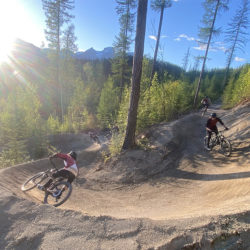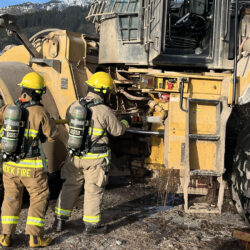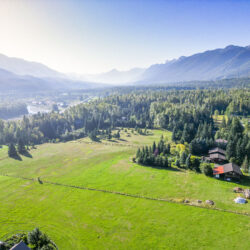Mountain biking is a big industry worldwide, and there’s no question that Fernie is on the radar.
Although the TransRockies was not the first multi-stage team endurance mountain bike event, its sister European event, the TransAlps, was. And all these new events like the BC Bike Race or the Furious 3, they have been copied from the TransRockies.
And this is good! Because more events means more riders participating in racing, these riders will eventually return to the TransRockies. The TransAlps and then the TraansRockies set out to create a whole new category for Mountain Bike racing, and they did.
Judging by the TransRockies 10th Anniversary event, they succeeded, and so did Fernie. Yes indeed. Fernie is the only community to have hosted all ten TransRockies events. And this year Fernie hosts three stages, keeping the riders in town for at least five days.
The TransRockies is good for business. It fills hotel rooms, restaurants and stores, and draws media attention from around the globe. In fact, TransRockies has taken been Fernie’s biggest summer event for some time.
As industries go, cycling is a growth industry around the world. The particulars change from year to year, but these days road riding is leading the popularity contest – just look at events like the RBC GranFondo, which will bring 6,500 riders from Vancouver to Whistler on Sept. 10.
BMX is also making a huge resurgence in popularity, boosted by the sport’s inclusion in the Olympic schedule since 2008, and its prominence at events like the Summer X Games.
Commuter bikes of all descriptions are selling quite well as the price of gas reaches new heights and city planners are starting to overlay bicycle networks onto urban roadways.
But while mountain bike sales are down slightly – a result of people buying fewer bikes and spending less per bicycle – it’s still a healthy industry. At one point in the 1980s, mountain bikes represented roughly 60 per cent of all sales in the U.S., although that number declined to around 22 per cent in 2010. Before the economic crisis of 2008, mountain bikes represented 25 to 30 per cent of the entire market. Given the number of things people use bikes for, that’s a huge market share.
Exact bicycle sales numbers are hard to nail down, but a search on global sales turns up statistics like Shimano increasing sales of components by 46 per cent in the first half of 2010.
Over $6 billion in bikes have been sold in the U.S. each year over the last decade, according to the National Bicycle Dealers Association of America, representing close to 20 million bikes.
The exception to growth was in 2009, a particularly bad year for the U.S. economy, with less than 15 million bikes sold – the fewest since the association started recording total bike sales in 1992. The rebound was significant – 19.8 million bikes in 2010 is the second-highest tally since just over 20 million bikes sold in 2000, and represents almost a 25 per cent increase over the previous year.
Further north, the Bicycle Trade Association of Canada said in February that bike sales by independent dealers – not chains like Sears or Canadian Tire – surpassed $250 million for the first time ever in 2010. Bikes in the 26-inch wheel category, which includes mountain bikes, were down 15.58 per cent in total dollar sales, but still rank second to road bikes and commuters. Comparatively, road bike sales were up 21.13 per cent, and youth and hybrid bikes also increased slightly.
But while sales of actual bikes may be down, that decline comes after years of sustained growth.
And in our part of the province, where every town has its own network of trails and the Fernie trails being in our back yard, the popularity of mountain bikes has never really declined at all. There are four bike shops in Fernie, all doing well.
Mountain bike events are extremely popular, with the Furious 3 selling out 300 spots in its first year. The seven-day B.C. Bike Race also reliably sells out 450 spots.
Both events generate revenue for hosts.
Mountain biking may have lost a little popularity overall, but that’s certainly not the case in this part of the world. Take the economy out of the picture and it’s as successful as ever.
While TransRockies may represent the best of mountain biking, it’s always been an inclusive event. Every component is open to the general public. That’s because in the end TransRockies isn’t about showing the evolution of biking, it’s about sharing it.
For more information on events and registration, visit www.transrockies.com.














